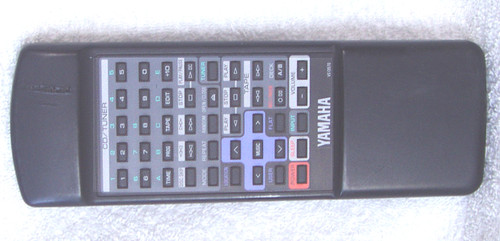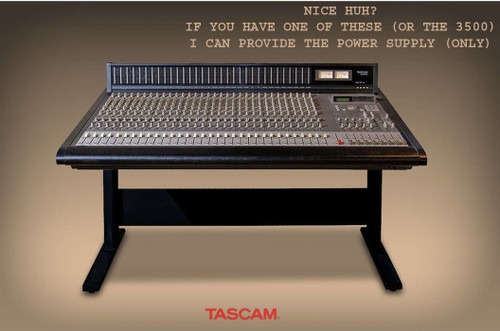This sub woofer is suitable where the user wishes to reinforce the bass response (30Hz ~ 200Hz) of a small stereo loudspeaker system that is being used in a small/medium sized room, garage etc adding low frequency response capabilities in sound systems that often have inadequate loudspeakers to provide proper bass response - you can't expect much from a tiny 3" speaker that is trying to reproduce a range of 50Hz up to say 15Khz, its just not going to cut it. Add a sub-woofer like this unit and at least those little speakers you have can focus on the higher frequencies!
Please read below (Testing Section) about how to connect one of these to your own audio system.
Yamaha Powered Sub-Woofer
Model: SW P270
Line level input
Inbuilt low frequency amplifier
Front end active filter practically kills any audio outside of the range 30Hz ~ 200Hz
Forward facing speaker
Forward port
Runs off standard Australian 240V AC domestic power socket
Total amplifier maximum output 40W RMS (Mono block chip which could probably be pushed to 50W)
Rear ON-OFF control and Level control
Dimensions: 220mm wide x 365mm height x 370mm deep
Weight: 9Kg
SUPPLIED:
Yamaha SW P270 Sub Woofer unit
T STINGER short audio cable (2x RCA Phono (male) to 1x RCA Phono female)
High quality HARMONY single channel audio cable (1x RCA Phono male to 1x RCA Phono male) 2.5 metre length
NOT SUPPLIED:
User manual - not needed!
COSMETIC CONDITION:
Black Ash veneer cabinet is in good condition, although I can see a small amount of separation of the veneer on one side this in no way degrades the physical stability of the cabinet. The cabinet is clean and only has minor scuff marks, no deep scratches!
The front cloth grill is clean and without rips etc
Nice looking unit although normally this would be "towards the rear" of your sound system to reinforce the bass response anyway.
Rear single RCA input, the level knob and the Green LED are all clean and undamaged
TESTING:
Some basics to begin with:
ONLY ever send line level audio signals to this sub-woofer, NEVER direct from the power amplifier speaker outputs (the audio level will be way too high) Now this actually doesn't mean you cannot connect to the amplifier loudspeaker outputs but you would need to obtain a "level convertor" which drops the output of the amplifier to levels that are suitable for use with this sub-woofer equipment.
CD, Cassette and Receivers are common audio components with line level outputs
Older, quality integrated amplifiers also have a very handy link system between the separate pre-amplifier and power amplifier sections. These old amplifiers make using this sub-woofer particularly easy - and they sound sweet too! My testing was with the NAD 7150 and 3240E.
Some power amplifiers will also have a separate sub-woofer output - these are not so common in domestic consumer gear but sometimes I have come across them (car audio though is very common but this sub-woofer is not suitable for use in your car, it needs 240V AC power!)
I have included a composite photograph of these connections which can be found on many amplifiers, hopefully these help make sense of what I am talking about.
My own test setup used the supplied T link cable (with one channel U link removed) plugged into one channel of the integrated amplifier (NAD) and the "tail" was plugged into the supplied Harmony extension lead, feeding audio to the sub-woofer. In most cases this type of setup will be sufficient but keep in mind that the sub-woofer is only responding to the low frequencies in ONE channel (via the link)
There are no built-in crossover/frequency response controls. The unit comes with a nice active filter internally, this filters out practically all audio EXCEPT 30Hz ~ 200Hz.
If you needed to "fine tune" the frequency response of the sub-woofer then this needs to be done PRIOR to this sub-woofer e.g Equalizer settings or if available, the main amplifier sub woofer output. Just to make it clear, you DON'T NEED to use an external filter but if you were planning to focus on a narrow low end frequency range, an equaliser fitted in-line before this sub-woofer would do the trick.
We had this quite some time ago in one of our audio post "audition" studios to check out the ability of small sub-woofers to enhance bass response in a small speaker system. After the business was shut down (retired) this gear was put away in storage until last week ...This sub-woofer works REALLY well!
Push the power button and on comes the Green LED.
Adjust the level knob to about midway and adjust as necessary once you start playing some music through your system.
Until there is a low frequency signal, this sub-woofer just sits there minding its own business - the low frequency pass filter is very effective, if there is little low frequency in the signal you will hear practically nothing.
But once those kick drums, bass etc kick in, this sub-woofer comes alive!
The bass audio is a nice clean sound, no rattles or other strange noises - I tested the sub-woofer first by sending a pure sine-wave to the unit (Professional AWA Precision Audio Signal Generator) and listening what happens to the Yamaha sub-woofer above and below its design frequency - the cut-off points are pretty sharp. But a pure tone is one thing, real life music gives a more realistic test so I played a range of music from African to Drum N Bass and the result is truly amazing, the low end (bass) really pumps!
Now you also have to be realistic here, this equipment is not high powered (40W RMS) and the speaker Yamaha uses is only a 5" diameter so don't expect miracles but it certainly "lifts" a very mediocre small loudspeaker system that is typically used in a small room or apartment.
Keep in mind though, these are low frequencies and they will penetrate walls easily. This means your neighbours will hear every beat of your music if you are not cautious!
One last thing....while looking to see if anyone had posted a decent "test"video of this unit on Youtube, I came across this person testing the sub-woofer using a direct connection with his mobile phone! That is simply crazy, most phones have extremely poor low frequency response so it's not much good sending a non-existant or poor low frequency audio signal from something like a mobile phone to a sub-woofer - you cannot enhance something that doesn't exist in the first place!















